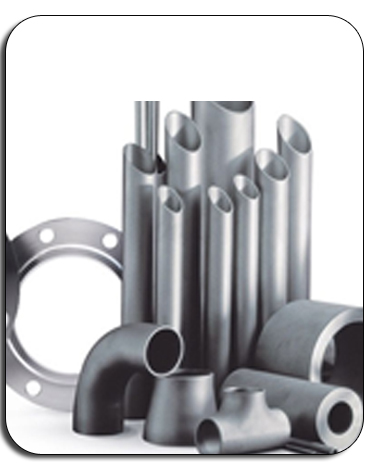Special Products
Duplex 2304
Chemical Composition
Duplex 2304 is a 23% chromium, 4% nickel, molybdenum-free duplex stainless steel whose structure is a balance of ferritic and austenitic. It has general corrosion resistance similar or better than Alloys 304L and 316L but with yield strength nearly double that of austenitic stainless steels. Its duplex microstructure and low nickel and high chromium contents also allows Duplex 2304 to demonstrate improved stress corrosion resistant properties compared to 304 and 316. It is typically suitable for all applications in the -58oF to 572oF (-50oC to 300oC) temperature range and is designed to feature high mechanical strength, good weldability, good corrosion resistance, high resistance to stress corrosion cracking, good machinability, low thermal expansion, good fatigue properties, high thermal conductivity, and easy fabrication.Applications
Duplex 2304 is generally used in the same applications in which Alloys 304 and 316L are used. Some examples of these applications include:
- Chloride containing environments
- Welded pipe systems within the Pulp and Paper, Chemical and Petrochemical, and Water Treatment industries
- Transportations
- Heat exchanger tubes
- Architecture, building, construction
- Pressure vessels
- Caustic solutions, organic acids
- Food industry
Corrosion Resistance
- Due to its high chromium content of 23%, the corrosion resistance properties of Duplex 2304 are practically equivalent to those of Alloy 316L
- Its duplex microstructure and low nickel and high chromium contents allows Duplex 2304 to have improved stress corrosion resistance properties compared to the 304L and 316L standard austenitic grades.
- More resistant to pitting and crevice corrosion resistance that Alloy 316L
- Outperforms Alloys 304L and 316L in stress corrosion cracking resistance in chloride containing aqueous solutions
- Its corrosion rate in boiling nitric acid (65%) is higher than that of Alloy 316L
- Its high yield strength allows Duplex 2304 to perform well in abrasion/corrosion applications
Fabrication
Weldability
- Can be successfully welded by TIG manual and automatic, PLASMA, MIG, SMAW, SAW, FCAW
- Duplex microstructure renders the alloy less sensitive to hot cracking
- Pre-heating and post welding is not required
- Filler metal should be a balanced ferrite/austenitic type
Machinability
- Exhibits improved machinability properties particularly when considering drilling
- Low speeds and high feeds will minimize this alloys tendency to work harden
Fabrication
Composition
C |
Cr |
Fe |
Mn |
Si |
S |
P |
Ni |
Cu |
N |
|
|---|---|---|---|---|---|---|---|---|---|---|
|
Duplex 2304 |
0.03 max |
min: 21.5 max:24.5 |
Bal. |
2.5 max |
1.0 max |
0.03 max |
0.04 max |
min:3.0 max:3.5 | min:0.05 max: 2.0 |
min: 0.05 max: 2.0 |
Mechanical Properties
Grade |
Tensile Strength ksi (MPa) min |
Yield Strength 0.2% offset ksi (MPa) min |
Elongation (% in 50mm) min |
Hardness (Brinell) MAX |
Hardness (Rockwell B) MAX |
|---|---|---|---|---|---|
Duplex 2304 |
87 (600) |
58 (400) |
25 |
293 |
31j |
Physical Properties
Duplex 2304 |
|
|---|---|
Density at 68°F (20°C) |
0.28 lbm/in3 7800 kg/cm3 |
Coefficient of Thermal Expansion |
ax10-6°C-1 |
68°F to: 212°F (20 -100°C) |
13 |
68°F to 392°F (20 -200°C) |
13.5 |
68°F to 572°F (20 -300°C) |
14 |
Thermal Conductivity |
W.m-1.K-1 |
at 68°F |
17 |
at 212°F |
18 |
at 392°F |
19 |
at 572°F |
20 |
Electrical Resitivity |
(µ_ cm) |
at 68°F |
80 |
at 212°F |
92 |
at 392°F |
100 |
at 572°F |
105 |
Specific Heat |
(Btu/lb/°F) |
32°F to: 212°F (20 -100°C) |
0.11 |
